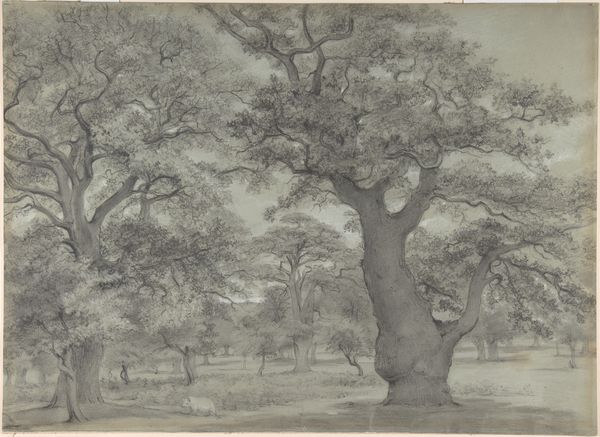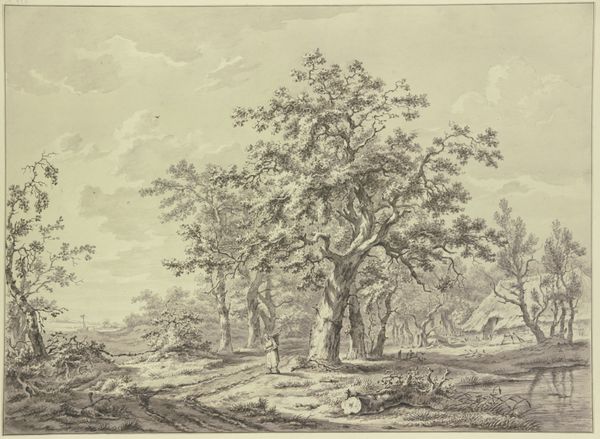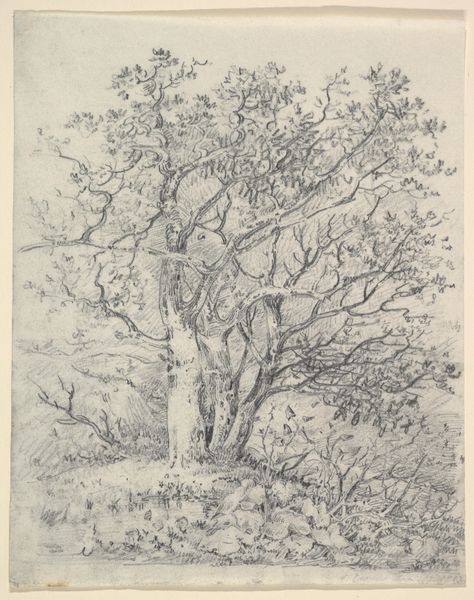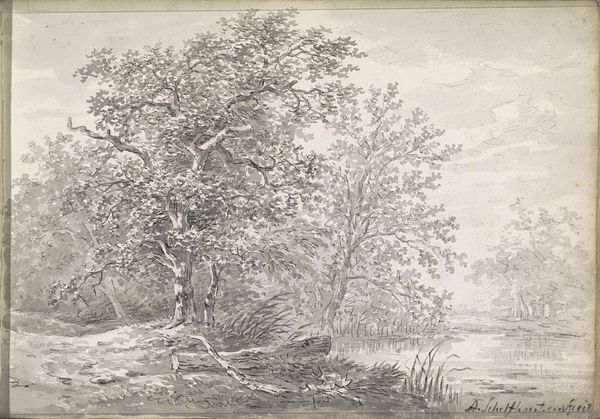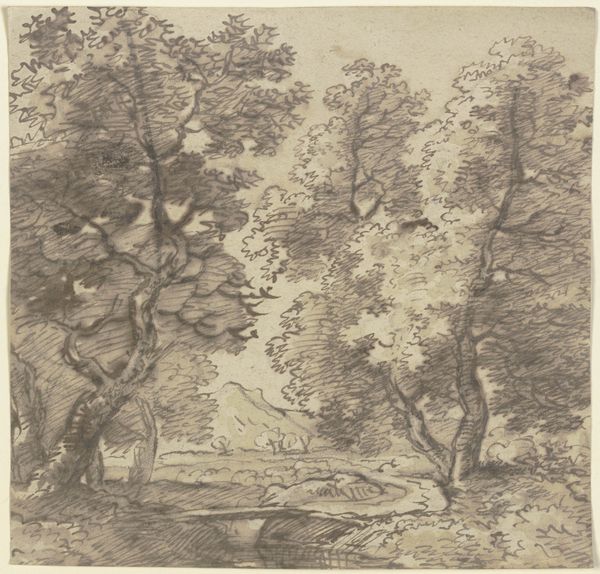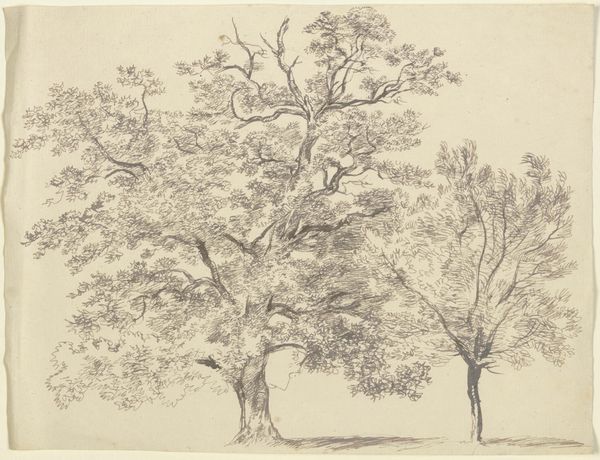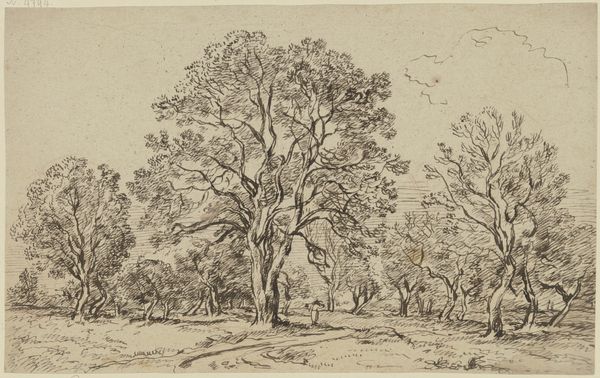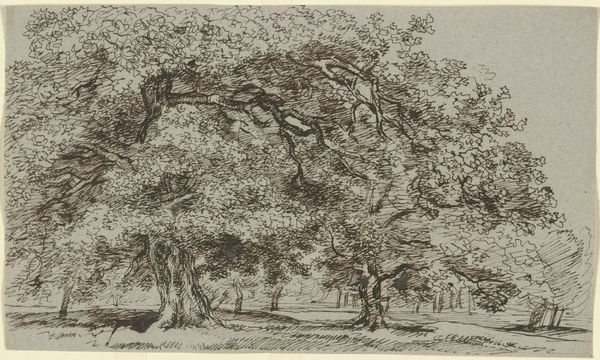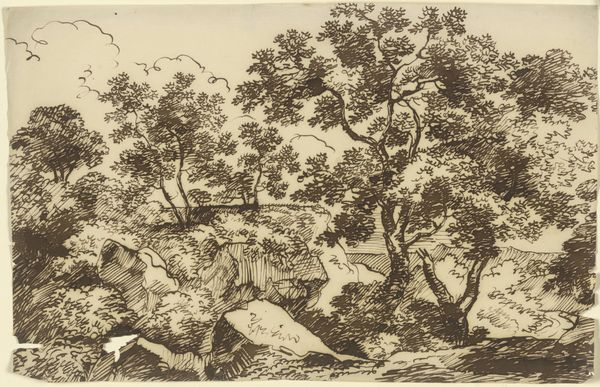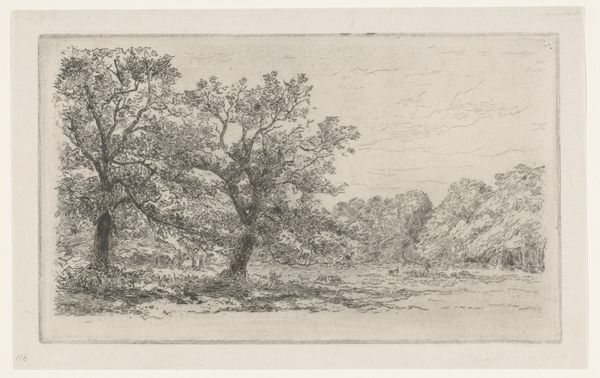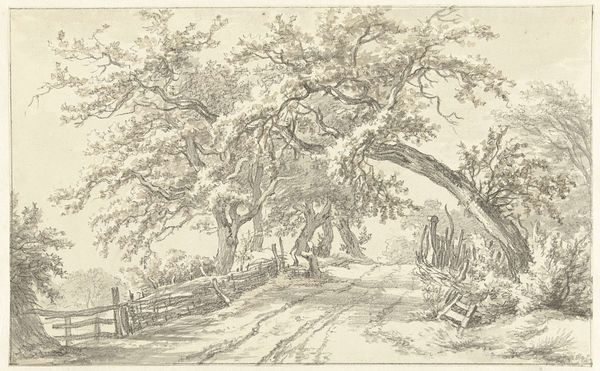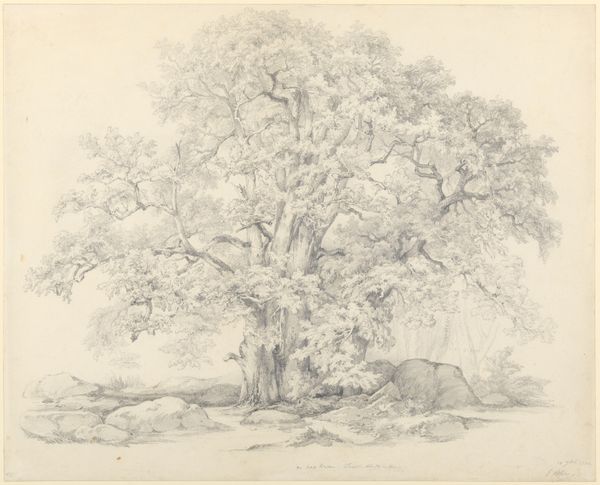
Kastanjeboom, zogenaamde Castagno di cento cavalli, op de oostelijke helling van de Etna bij Sant' Alfio 1778
0:00
0:00
Dimensions: height 192 mm, width 232 mm
Copyright: Rijks Museum: Open Domain
Willem Carel Dierkens made this drawing of the chestnut tree, the so-called Castagno di cento cavalli, on the eastern slope of Mount Etna near Sant' Alfio. Dierkens, a Dutch artist, captured this tree around the time of his death at just 25 years of age. In the 18th century, a fascination with nature intertwined with nascent scientific observation, influencing artists’ depictions of the natural world. During the Enlightenment, trees, especially ancient ones, were also seen as symbols of endurance, wisdom, and historical continuity. The Castagno di cento cavalli, literally the "Chestnut Tree of One Hundred Horses", is itself a figure of myth and legend, named for a queen of Aragon who supposedly sheltered under it with one hundred knights during a storm. Dierkens' choice to depict this particular tree connects the artwork to themes of power, shelter, and historical narrative.
Comments
No comments
Be the first to comment and join the conversation on the ultimate creative platform.

